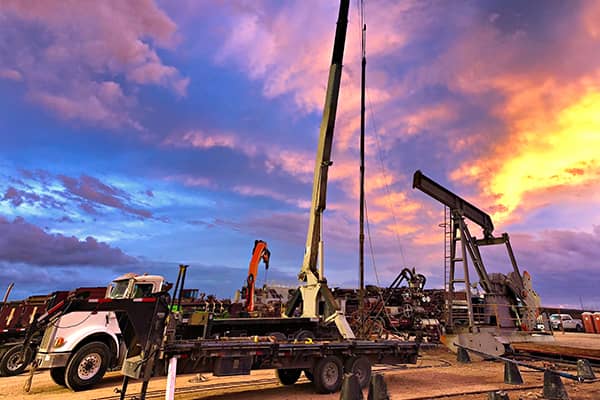A Beginner’s Guide to Frac Equipment: Types and Applications
The hydraulic fracturing process, or fracking, efficiently extracts crude oil and gas trapped in shale rock formations. This guide covers hydraulic frac equipment, features and applications, and the chemicals and fluids used in fracturing operations.
How Does Hydraulic Fracking Work?
Hydraulic fracturing operations involve drilling a vertical well at least a mile below the earth’s surface down to the shale rock, followed by gradual horizontal drilling that could continue for thousands of feet. Over a million pounds of steel and cement help isolate the cylinder of the well from the groundwater layers.
Tiny holes or perforations are made at the end of the horizontal leg through which a mixture of water (90%), frac sand (9.5%), and chemicals (0.5%) is injected at high pressure. Once the pressure is released, oil and natural gas rush to the surface for extraction.
What is Fracturing Equipment?
Hydraulic fracturing requires a number of expensive equipment such as high-pressure and high-volume fracking pumps, blenders for making the fracking fluids, and storage tanks. We look at the necessary machinery in detail below.
Typical Equipment Used for Hydraulic Fracturing
Frac Pumps

Mounted on a truck, trailer, or skid, hydraulic fracturing pumps are diesel-powered heavy-duty, high-pressure pumps. The pumping equipment helps in hydraulic and acid fracturing and solvent and liquid carbon dioxide pumping. They work well in different environments, be it desert, arctic, or tropic.
Data Vans
The mobile data acquisition system and control center with a high-performance computer system and control system helps monitor, display, record, and analyze pumping and well parameters. It is helpful during fracking, foamed cementing, acidizing, and other pumping operations.
Chemical Units
The chemical units help in continuously injecting the chemical additives that support the fracturing operations. They have multiple remote-controlled units and, if required, heated chemical tanks.
Iron Handling Equipment
These are generally flatbed trucks with different manifold configurations. They act as a support infrastructure for transporting treating pipes and connections to the well site.
Frac Blenders
This diesel-engine-powered, truck-mounted machine helps in well acidizing and proppant blending. It can handle highly viscous fracturing fluids with high concentration proppants or low viscous fluids with low concentration proppants.
Hydration Units
Hydration units help prepare frac and other frac base fluids (gels) before transferring to the blender for cross-linking. These can operate as a standalone unit without a data van and control systems.
Frac Water Heating
This hot water unit has a diesel-fired burner, heat exchanger, steel heater, and automatic burner controls. It helps circulate hot fluids into production wells, flushing of flow lines, well annulus, and flow tubing.
Sand Handling Equipment
This is a mobile sand storage and delivery system for continuous delivery of the proppant to the blender.
Other Fracturing Machinery
Other machines include:
- booster pump skids
- frac water tanks
- mono pump skids for chemical injection
- hydraulic power packs
- workshop containers
Chemicals Used in Fracturing
Fracking uses friction reducers, gelling agents, and biocides. Acids help dissolve minerals and let the oil flow freely. Biocides eliminate bacteria, and gels increase the viscosity of the fracking fluid to help carry more proppants. According to the EPA, there are over 1,084 chemicals used in fracking, with the most common being methanol, ethylene glycol, and propargyl alcohol.
Fluids Used in Fracturing
Oil well fracturing requires a vast amount of fluids, a blend of water, silica sand, and fracking chemicals. Specialized pools called C-rings hold the fluids before releasing them for use. It is better to use fresh water for the fluids because it does not react with the chemicals and requires less pumping pressure than brine.
Fracking allows the clean extraction of fossil fuels at a lower cost. With the revolutionary fracking process, the US has become the world’s largest producer of petroleum and gas.
Conclusion
Hydraulic fracturing is energy-intensive work that requires large quantities of water, frac sand, and some chemicals. The process calls for heavy-duty and expensive equipment on-site. Today, frac pumps, data vans, blenders, hydration units, or iron handling equipment allow for a more efficient and environmentally cleaner modern hydraulic fracturing process.